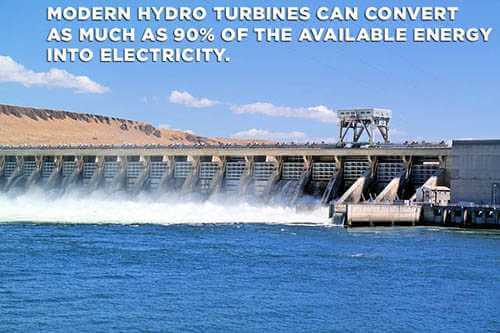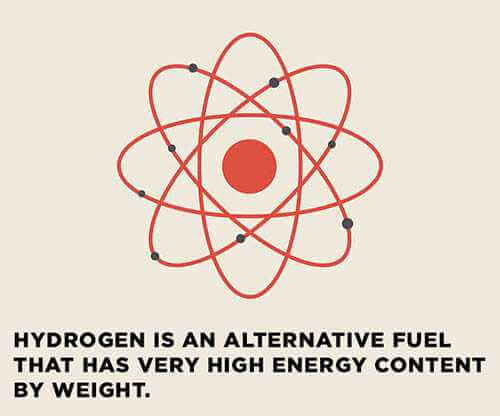Introduction and Different Types of Renewable Energy Resources
Renewable energy introduction and different types of renewable energy sources
Table of Contents
Introduction to Renewable Energy
In simple terms, the energy that is collected from renewable resources is known as renewable energy — for example – wind, geothermal heat, sunlight, rain, waves, tides, etc. We widely use various types of renewable energy resources in different areas, especially in transportation, electricity generation, rural, heating & cooling of air and water, etc.
The use of new technologies and renewable energy together has made our life quite easy these days. The very first renewable source of energy is the sun. The sun provides us with heat and light, which is an essential source for our survival. On the other hand, wind helps to provide power to the boats to sail quite easily. Windmills also help a lot to grind the grains much faster.

Renewable energy can also be called as clean energy that is good for our health and the environment as well. Unfortunately, from the past few centuries, we have started spoiling our environment by using dirty, unhealthy, and non-renewable energy sources such as coal, gas, oil, etc. These non-renewable energy sources are available in a limited amount under Earth’s crust. Non-renewable energy sources also take quite a long time to restore in natural ways.
Another drawback of non-renewable energy sources is that it is available in specific parts around the world. On the other hand, renewable energy sources are available in plentiful amounts across the globe that each country can access them. For example – Every person from every corner of the world can have access to the heat and light of the Sun.
The benefits of renewable energy sources cannot be denied. The advantages of renewable energy sources compelled us to use them to save the environment.
Here you will find out what are the various forms of renewable energy sources. This article is also helpful as renewable energy for kids. Children can also refer this article to know about renewable energy for their academics.
What Are the Different Types of Renewable Energy?
The major 7 types of renewable energy resources are as follows –
-
Solar energy resource
When radiant energy is captured from sunlight and transformed to get heat, electricity, hot water, etc. then this energy is known as solar energy.
One of the major benefits of using solar energy is that we can minimize the use of fossil fuels as sunlight is an unlimited source of energy that can be used to get solar power in different means.

Accepting solar energy will also protect us from the harmful emissions from fossil fuels. Solar energy not only helps to improve the environmental condition but also helps to reduce our electricity bills.
For example – Solar energy is used in solar water heaters, which are widely used in homes these days. Rooftop solar panels are getting used worldwide, which helps to minimize utility bills along with reducing carbon emission.
-
Wind energy resource
The wind is also a natural resource of energy. Wind energy is used to generate electricity. The wind farms transform wind energy into electricity by using turbines. Wind energy provides power to various organizations on a large scale.
Various factors influence wind energy, such as the differences in the atmospheric temperature, Earth’s rotation, the geography of the planet, etc.

Wind energy is one of the clean sources of energy that does not cause pollution to the environment. The transformation of wind energy does not release any harmful pollutants in the atmosphere like fossil fuel releases greenhouse gases in the atmosphere.
For example – Wind turbines are used to generate electricity. Wind turbines convert the kinetic energy into mechanical energy used for various purposes. As per the National Geographic site, Walney Wind Farm is the largest offshore wind farm across the globe. This wind farm has 102 turbines established in the Irish Sea off the coast of Cumbria, England, that generates 367MW of power.
-
Hydroelectric energy resource
When we talk about hydroelectric power, the first thing that comes to our mind is dams. Pumped-storage hydro power is used to generate electricity through hydroelectric energy, where water flows through the turbines of the dams.

It can be used on a large scale as well as small scale. Hydroelectric power is an eco-friendly source of energy as it does not causes pollution to the environment.
For example – 22.5gw Three Georges hydroelectric power plants located in Yichang, Hubei province, China. It is the biggest hydroelectric station worldwide.
-
Geothermal energy resource
The heat trapped under Earth’s crust is known as geothermal heat. Geothermal heat is absorbed beneath the Earth during the formation of the planet (approx. 4.5 billion years ago) and through radioactive decay to some extent.
Sometimes, when the pressure of geothermal heat increases up to the optimal level, then it releases energy as a natural process such as volcanic eruptions. This natural source of energy can be used to generate geothermal energy for various purposes. For example – the turbines can be operated using geothermal energy.

However, geothermal energy is not a common resource of energy like other renewable energy resources, but it is highly potential to fulfill energy supply even on a large scale.
For example – Geyser, lava mountains formations, hot springs, etc. all are examples of geothermal energy. Pahoehoe lava formation in Hawaii, United States, is an excellent example of geothermal energy.
-
Ocean energy resource
Oceans are a widely available natural resource of energy. Two types of energy can be generated from oceans, i.e., thermal and mechanical. Ocean thermal energy is generated by using warm water surface temperature, whereas ocean mechanical energy is generated by using the ebbs and flows of the tides. The creation of tides is a natural process that depends on the rotation of the Earth and gravity of the moon.
The oceans cover almost 71% of the Earth’s surface, and it is an easily available renewable energy source. The ocean energy can be predicted quite quickly as compared to other energy resources. Ocean energy can be used to facilitate at least the local people staying near coastal areas of the oceans.
For example – La Rance Tidal Power Plant located in France that generates up to 240MW renewable energy. Swansea Bay Tidal Lagoon, located in the United Kingdom, generates approximately 240MW renewable energy.
-
Hydrogen energy resource
The two molecules of hydrogen and one molecule of oxygen combine to make water. Similarly, hydrogen combines with other elements to create new substances. If we separate hydrogen from other elements, then the separated hydrogen can be used as a fuel or electricity source.

Hydrogen is an environmental-friendly fuel, as it does not cause pollution. It can be used in providing power in various modes such as in batteries, electric motors, etc.
For example – NASA uses liquid hydrogen as a fuel to launch the Space shuttles and other rockets into the orbit.
-
Biomass energy resource
It is used to generate bio-energy, which is also a renewable energy resource. Biomass is an organic matter. The biomass energy can be generated using different methods. The decomposition of organic material, such as plants and manure, generates biomass renewable energy.

Biomass energy can be helpful in our daily activities. However, the generation of biomass energy releases carbon dioxide in the atmosphere, but this problem can be solved by planting more trees.
For example – The use of wood in fireplaces is an excellent example of biomass energy. In 2017, biomass fuel provided almost 5% of the entire primary energy in the United States.
Conclusion to renewable energy:
Climate change, global warming, extreme pollution, etc. has forced us to think about renewable energy as an integral component of global energy. Renewable energy technologies are one of the essential sources of energy for us and the upcoming generations as well.
As renewable energy is associated with less emission, it can be developed as the main source of energy worldwide. The consumption of energy depends on various factors like population growth, weather, advanced technologies, economic growth, etc. We need to switch on to the energy sources that can be replenished naturally, unlike non-renewable energy sources.
The use of renewable energy sources will not only help to minimize pollution level, global warming, climate change, etc. but also helps to maintain sustainability.